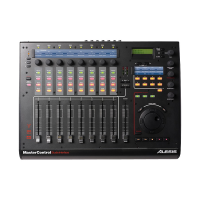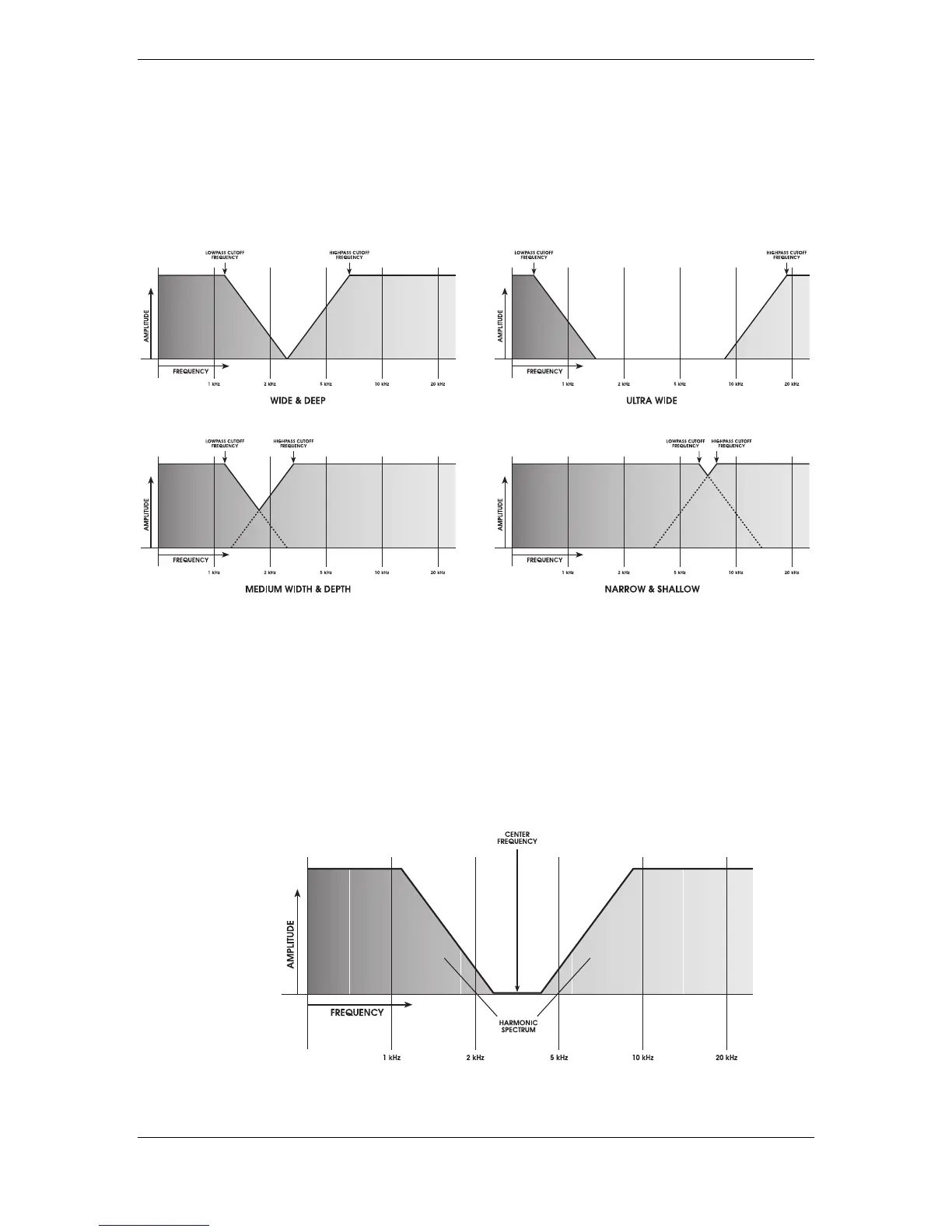Chapter 5: Oscillators and Filters
ANDROMEDA A6 REFERENCE MANUAL 119
Since a notch is created by combining high and low pass filtering, you can adjust the
frequency of Filter 1 and Filter 2. As long as the frequency of Filter 2 (the low-pass
element) is lower than that of Filter 1 (the high-pass element), you'll have a notch.
The closer the frequencies are to each other the narrower and shallower the notch.
Conversely, the farther the frequencies are from each other the wider and deeper the
notch as illustrated in the following graphs:
Notice that the notch is not symmetrical when this method is used. This is because he
slopes of two filters are different: the 4-pole slope of
FILTER 2 is steeper than the 2-
pole slope of
FILTER 1 (see "Slope", the next section).
Inverted Band Pass
By pressing the
BP INVERT button, the band pass filter acts somewhat like a notch
filter by inverting the slopes. The main difference is that an inverted band pass filter
has a fixed width and depth; the notch, as illustrated above, has variable width and
depth.

